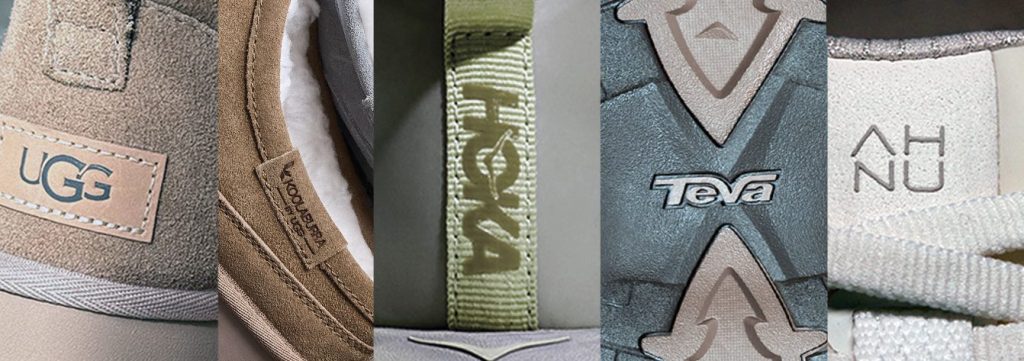Hoka-parent Deckers Outdoor’s forecast disappoints despite solid holiday quarter
Deckers Outdoor’s Stellar Q3 Performance: How Hoka and Ugg Are Redefining the Footwear Game
In the ever-evolving footwear industry, Deckers Outdoor Corporation has emerged as a formidable player, leveraging its dual-brand powerhouse in Hoka and Ugg. On January 31, 2025, the company made waves with its third-quarter financial results, further cementing its stance as an innovator in balancing legacy and cutting-edge design. While the results were remarkable, not all reactions were as glowing, leaving investors and industry experts with mixed feelings.
A Quarter Marked by Record Revenue
Deckers Outdoor reported a striking $1.83 billion in revenue for Q3, surpassing the $1.73 billion forecast by analysts—data sourced from LSEG. This reflects an impressive 17% revenue growth compared to the previous quarter. Much of this success stems from the company’s ability to sell premium products at full price, a strategic move that speaks to its robust brand loyalty. Importantly, this marks the company’s *seventh consecutive quarter* of double-digit revenue growth—a run that is as rare as it is impressive in such a competitive marketplace.
However, despite these strong numbers, Deckers’ stock surprisingly dipped 17% following the announcement. Analysts, including Drake MacFarlane from MScience, pointed to the company’s conservative forward guidance, which may have dampened investor enthusiasm. While the adjusted annual projections for fiscal year 2025—upgraded from 12% to 15% growth—signal confidence, it seems Wall Street was looking for something more optimistic.
Hoka: The Meteoric Rise of a Modern Icon
Deckers’ success in Q3 can be largely attributed to the explosive growth of Hoka, a brand celebrated for its innovative running shoes. Known for their oversized soles and premium quality, Hoka’s products, which can cost up to $300, continue to sell predominantly at full price. This pricing strategy, alongside rising demand for performance footwear, underscores a broader consumer trend towards investing in high-quality activewear.
Originally targeted at runners, Hoka has expanded its market appeal, drawing in both athletes and casual fitness enthusiasts. By carving out a niche in a heavily saturated market long dominated by giants like Nike, Hoka has demonstrated that even newer brands can claim significant market share when innovation meets customer demand. Competitors are undoubtedly paying attention, as Hoka steadily strengthens its position.
Ugg: A Timeless Legacy

credits: deckers.com
While Hoka grabbed much of the spotlight, Ugg remains a cornerstone of Deckers’ portfolio. The brand’s iconic boots and increasingly diverse product offerings—such as sandals—remain perennial favorites, particularly during the holiday shopping season. Ugg’s sustained popularity played a crucial role in Deckers’ stellar Q3 performance, proving the enduring appeal of its lineup.
By consistently refreshing its designs and aligning with changing consumer preferences, Ugg has managed to maintain relevance, even years after its initial cultural explosion. Together, Hoka and Ugg form a powerful one-two punch that sets Deckers apart in the crowded footwear landscape.
Challenges with Investor Sentiment
Even with its upwardly revised annual net sales growth forecast of approximately $4.9 billion and a higher EPS range of $5.75–$5.80, Deckers’ cautious tone in forward guidance seems to have unnerved investors. While Deckers has demonstrated agility and innovation on the customer front, it serves as a reminder that businesses must also balance investor expectations with operational realities.
Analysts like MacFarlane have noted how moments like this reflect the delicate tightrope companies walk between showcasing momentum and managing risk. For Deckers, the muted stock performance following stellar results underscores the unpredictable nature of Wall Street sentiment, even for companies that consistently outperform.
Shaping the Future of Footwear

credits: deckers.com
Deckers Outdoor’s success offers a playbook for sustaining relevance and driving innovation in a competitive industry. With Hoka’s rising influence in the performance footwear segment and Ugg’s sustained appeal, the company has deftly merged cutting-edge design with legacy expertise. Both brands offer consumers what they crave—quality and style—while creating meaningful differentiation from competitors.
For consumers, Deckers represents a commitment to delivering exciting new products. For investors, the short-term stock volatility might cloud but not undermine the company’s long-term potential. The dual impact of Hoka and Ugg serves as a blueprint for how legacy and innovation can work in tandem to dominate the market.
In an industry as dynamic as footwear, Deckers Outdoor reminds us that the right mix of vision, execution, and adaptability can turn challenges into opportunities, ensuring both consumers and markets stay tuned for what comes next.











